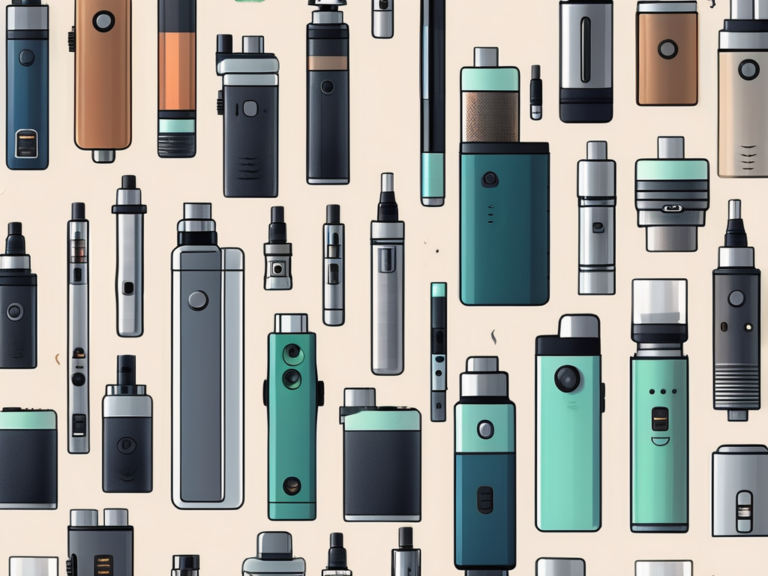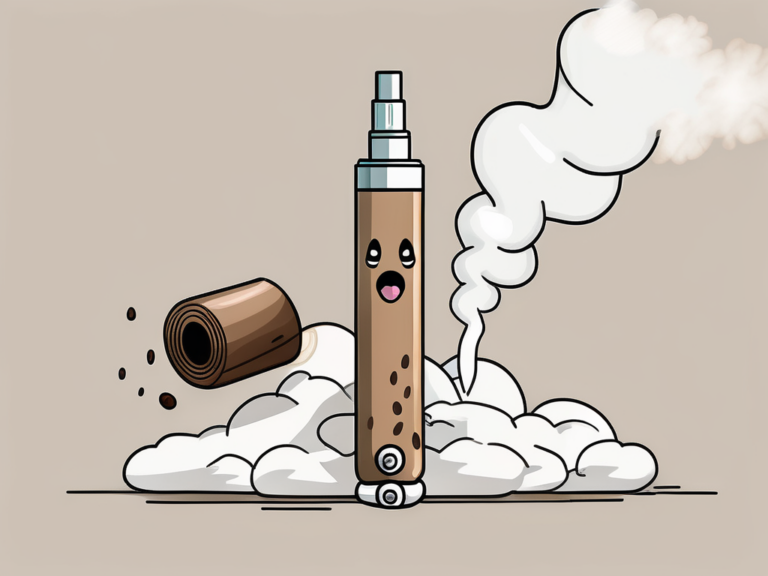when were vapes invented
With the increasing popularity of vaping in recent years, many people are curious about the origins of this modern phenomenon. Understanding the concept of vaping and the history behind it can provide valuable insight into this unique and evolving industry. In this article, we will explore the timeline of when vapes were first invented and the subsequent rise of vaping culture. We will also touch on the controversies and health concerns surrounding this alternative to traditional smoking.
Understanding the Concept of Vaping
Vaping is the act of inhaling and exhaling vapor produced by an electronic device commonly known as a vape. It simulates the experience of smoking without the combustion of tobacco. Instead of burning tobacco leaves, vapes heat a liquid known as e-liquid or vape juice, which typically contains nicotine, flavorings, and other chemicals.
The e-liquid is heated in a vaporization chamber within the vape device, converting it into an aerosol that the user inhales. This aerosol, often called vapor, is then exhaled, creating a vaping experience similar to smoking.
Vaping has gained popularity as an alternative to traditional smoking, with many users citing its potential harm reduction benefits. While research is ongoing, some studies suggest that vaping may be less harmful than smoking tobacco due to the absence of combustion and the ability to control nicotine levels.
The Basic Components of a Vape
A vape consists of several essential components that work together to produce vapor. These include a battery, an atomizer or coil, a tank or cartridge to hold the e-liquid, and a mouthpiece through which the vapor is inhaled.
The battery powers the device and heats the coil, which then vaporizes the e-liquid. The tank or cartridge holds the e-liquid and allows for easy refilling or replacement. The mouthpiece is where the user inhales the vapor, and some devices come with adjustable airflow to customize the vaping experience.
Different Types of Vapes
There are various types of vapes available in the market, each with its own unique features. Some popular types include cigalikes, which closely resemble traditional cigarettes in appearance and size, and vape pens, which are slim and easy to use.
Other types of vapes include pod systems, which use pre-filled or refillable pods, and advanced mods, which offer customizable settings for more experienced users. Pod systems are convenient for beginners due to their simplicity, while advanced mods cater to users who enjoy tinkering with settings like wattage and temperature control.
The Origins of Vaping
The concept of vaping can be traced back to early attempts at vaporization, although they were quite different from the modern vapes we see today.
Early Attempts at Vaporization
As far back as the early 1960s, scientists and inventors began experimenting with the concept of vaporizing substances for inhalation. The first electronic cigarette, or e-cigarette, was patented in 1963 by Herbert A. Gilbert, who envisioned a smokeless alternative to traditional tobacco cigarettes.
Despite the innovative nature of Gilbert’s invention, the cultural landscape at the time was not conducive to the widespread adoption of vaping. The public perception of smoking and tobacco use was vastly different from what it is today, and the health risks associated with traditional cigarettes were not as widely known.
However, these early attempts at vaporization planted the seeds for future developments in the world of vaping, setting the stage for the evolution of e-cigarettes.
The Evolution of E-Cigarettes
It wasn’t until the early 2000s that the modern e-cigarette as we know it began to take shape. A Chinese pharmacist named Hon Lik is credited with inventing the first successful electronic cigarette in 2003, after his father, a heavy smoker, died from smoking-related illnesses.
Motivated by personal tragedy, Hon Lik set out to create a safer alternative to smoking. His invention revolutionized the way nicotine was consumed, offering a potentially less harmful option for smokers looking to quit or reduce their tobacco intake.
Working for a company called Ruyan, Hon Lik’s pioneering work paved the way for the development of a thriving industry centered around vaping. The introduction of e-cigarettes sparked a global conversation about smoking cessation and harm reduction, leading to ongoing debates about the benefits and risks of vaping.
The Invention of Modern Vapes
Following Hon Lik’s invention, e-cigarettes gained popularity in Chinese markets and soon spread to the rest of the world. The introduction of modern vapes marked a significant shift in the smoking landscape.
The Role of Hon Lik
Hon Lik, a Chinese pharmacist, is often credited with inventing the modern e-cigarette in 2003. His motivation stemmed from his father’s struggle with lung cancer, which was caused by smoking traditional cigarettes. Lik’s invention was a groundbreaking moment in the smoking industry, offering smokers a potentially less harmful alternative.
His patent paved the way for the development of various types of vaping devices and the subsequent growth of vaping culture worldwide. Lik’s contribution to public health and harm reduction cannot be overstated, as his invention has helped many smokers transition away from combustible tobacco products.
The Introduction of Vapes to the Market
In the early 2000s, vaping devices started to appear in international markets. Initially marketed as a healthier alternative to smoking, vapes gained momentum as a potential smoking cessation aid. Smokers looking to reduce or quit traditional cigarettes found refuge in the world of vaping.
As the market expanded, so did the variety of available flavors, nicotine strengths, and device designs. This extensive range allowed vapers to personalize their experience and find a suitable device and e-liquid that met their individual preferences. From fruity flavors to dessert-inspired ones, vapers could explore a wide array of tastes, making the vaping experience not only a smoking cessation tool but also a flavorful journey.
Moreover, the evolution of vaping technology has led to the creation of sleek pod systems, powerful mods, and user-friendly starter kits, catering to vapers of all experience levels. The innovation in vaping devices continues to drive the industry forward, with companies constantly striving to enhance the user experience and safety of their products.
The Rise of Vaping Culture
Vaping has not only become a popular alternative to smoking but has also spawned its own culture and community. Many people appreciate the social aspect of vaping and enjoy the sense of community that comes with it.
As vaping continues to gain momentum, it has evolved beyond just a smoking cessation tool to a lifestyle choice for many individuals. The act of vaping itself has become a form of self-expression, with enthusiasts customizing their devices with unique designs and accessories to reflect their personal style.
Vaping as a Smoking Alternative
One of the main reasons people turn to vaping is its potential as a smoking alternative. Vaping can be seen as a way to satisfy nicotine cravings while avoiding the harmful effects of tobacco smoke.
While scientific research on the long-term effects of vaping is ongoing, many vapers report improved respiratory function and an overall sense of well-being after switching from traditional smoking to vaping.
Moreover, vaping offers a wide range of flavor options that are not available in traditional cigarettes, allowing users to explore different tastes and preferences. This variety adds an element of excitement and experimentation to the vaping experience, further contributing to its appeal.
The Growth of Vape Shops and Communities
Vape shops, dedicated solely to selling vaping products and providing a space for enthusiasts, have sprung up around the world. These shops offer a wide range of vaping devices, e-liquids, and accessories, creating a hub for vapers to explore the latest trends and connect with like-minded individuals.
Furthermore, vape shops often host events such as vape meet-ups, competitions, and educational sessions to foster a sense of camaraderie among vapers. These gatherings not only provide an opportunity for vapers to socialize but also serve as platforms for sharing knowledge and building a stronger sense of community.
Online communities and forums have also flourished, serving as platforms for vapers to share their experiences, seek advice, and stay up to date with industry news and developments.
Whether through in-person interactions at vape shops or virtual connections in online forums, the vaping community continues to grow and evolve, creating a supportive and inclusive environment for individuals who have embraced vaping as more than just a habit, but as a way of life.
The Controversies and Health Concerns Surrounding Vaping
While vaping has gained a considerable following, it is not without controversy. The debate on the safety and potential health risks associated with vaping continues to divide opinions.
The Debate on Vaping Safety
One of the primary concerns surrounding vaping is the lack of long-term studies on its effects. While vaping is generally considered less harmful than smoking traditional cigarettes, the potential risks associated with inhaling aerosols and the use of certain chemicals in e-liquids should not be overlooked.
Regulatory bodies and health organizations around the world are closely monitoring the industry, and some countries have implemented strict regulations on the sale and advertising of vaping products.
Regulatory Measures on Vaping
In response to the increasing popularity of vaping and the potential health risks associated with it, many countries have introduced regulations to address these concerns. These measures include age restrictions, limits on nicotine content, and product labeling requirements.
It is important for vapers to stay informed about the regulations in their country or region to ensure their safety and compliance with local laws.
Conclusion
The invention of vapes and the subsequent rise of vaping culture have transformed the smoking landscape in recent years. From the early vaporization experiments to the introduction of modern vaping devices, this industry continues to evolve.
While there are still debates and concerns surrounding vaping, it has undoubtedly provided smokers with an alternative to traditional cigarettes and sparked a vibrant and inclusive community. As research and regulations progress, vapers and non-vapers alike will continue to follow the developments in this ever-changing industry.






